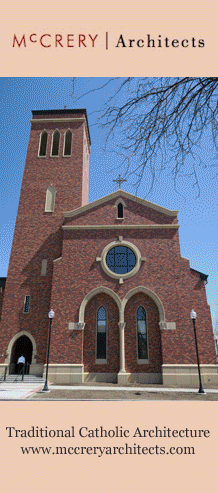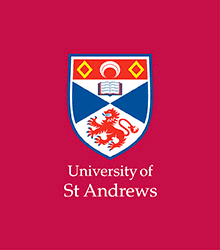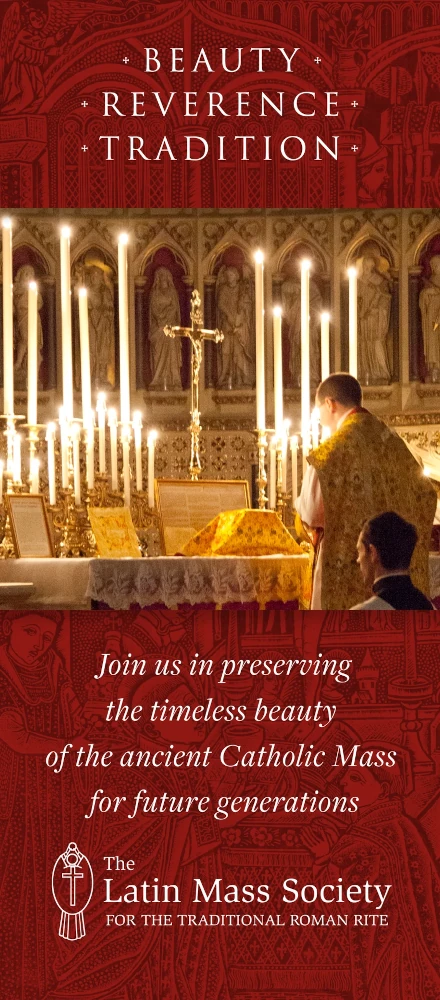Here is the music of the famous Dominican Salve Regina used all year after Compline, taken from the Antiphonarium. Take a look at it and I will apply the principles of phrasing I explained earlier. If you have the French Dominican recording of this, you might listen along as you read, in it you can hear how the phrasing and the lengthening of ending notes merge into an organic whole. They are also very good on distinguishing the strong retards at the end of major phrases from the lesser ones of the shorter clauses that make them up. To allow you to consult the rules given in the last post, I will reference them in brackets as I comment.

This is a major phrase with a break in the middle after Regina indicated by the half bar. So the major rhythmic phrase is the whole verse and there are two minor phrases [rules 1, 2]. The take-off begins on Salve and the landing on "ae" of misericordiae. There is a light touch down on "na" of Regina because of the half bar. This kind of subtle articulation is always observed in the rest of the antiphon at the various breaks, so I will not repeat it [rule 4].
There are no "true" double bars in the antiphon Salve Regina until its end because it is traditionally sung by all, not alternately by choirs. That first "double bar," after Salve, does no more than indicate the place to which the cantor sings and at which all come in. There is no lengthening of "ve" since this double bar represents merely that the choir comes in. The clivus on "na" of Regina is lengthened, but not the melisma on "ce" of dulcedo because even though "ce" is accented, it has a compound neume [rule 7A]. The same is true of misericordia, where "cor" is accented, but the second to last note is melismatic: so only the simple neume on "ae" is lengthened [rule 7A].
Phrase 2: "Vita, dulcedo et spes nostra, salve."
This major phrase has joints after Vita and dulcedo, indicated by the half bars. The mark after nostra is a quarter bar--equals a Solesmes dot, not a phrasing mark, so it does not divide a phrase and no breath is to be taken [rule 3]. The final syllables "ta" "do" and "ve" are lengthened, but not any previous notes because the previous notes are all melismatic [rule 7A]. The melismatic neume on "tra" of nostra is lengthened because of the quarter bar, but only on the two notes of the podatus [rule 7B].
Phrase 3: "Ad te clamamus exsules filii Hevae."
This major phrase has a joint after clamamus indicated by the half bar. Notice the two quarter bars. The compound neume on Ad ends in a Ephiphonus, which scants the smaller note. The quarter bar lengthens te but without pausing or breath [rule 6a]. Only "mus" of clamamus and the "vae" of Hevae are lengthened because the previous accented syllables have melismas [rule 7a]. The last two notes of the porrectus on "les" of exsules are lengthened without a pause because of the quarter bar [rule 7B].
Phrase 4: "Ad te . . . valle" contains nothing new. Apply rule 6A to te, 7A to clamamus, 7B to hac, and 7A to valle.
Phrase 5: "Eja ergo advocata nostra."
The phrase is jointed after ergo by the half bar. The odd looking podatus over the "E" of Eja is composed of a regular punctum and the large note of the liquescent Chephalus because the "j" is a semivowel: but this has no affect on phrasing. Notice the liquescent Ephiphonus on "er" of ergo because r is a liquid. Because that Ephiphonus is a compound neume only the "go" is lengthened by the half bar, even though "er" is the accented syllable [rule 7A]. In contrast, nostra is a bi-syllable with simple neumes on each one: so since "nos" is accented, both syllables are lengthened [rule 6B].
Phrase 6: "illos tuos . . . converte."
There is nothing new here except the lengthening of the last note only of the neume on "los" of oculos because it is a three-note neume [rule 7C]. Otherwise, apply 7A on tuos, 7B on misericordes, and 7A on converte.
Phrase 7a: "Et Jesum benedictum fructum ventris tui, nobis . . ."
This is routine: apply 7B on Jesum, 7A on fructum, tui, and nobis. The next part of this phrase has items of interest. Here it is with the rest of the antiphon:

Phrase 7b: "post hoc exilium ostende."
Note the lengthening of both notes of the clivus on "um" of exilium by the quarter bar, even though "si" is the accented syllable [rule 7B]. Notice also the big note (without the small) of a Ephiphonus on "sten" of ostende because "n" is a liquid--but this has no effect on singing. Both "sten" and "de" are lengthened here because they have simple neumes and "sten" is accented [rule 6B].
Phrases 8-9: "O clemens" and "o pia": nothing new. Apply 7B to both of the Os; apply 7A to clemens and pia.
Phrase 10: "o dulcis virgo Maria."
The joint in the phrase is at the half bar, which is actually in the middle of the notes on O. Note the quarter bar along with that half bar in the melisma on O. The quarter bar, as usual, lengthens the last two notes of the first neume on O without a pause or break [rule 7B]. The next neume on O after the quarter bar is lengthened only on its last note by the half bar because it has four notes [rule 7C]. Although it might seem bad form in Benedictine chant, we Dominicans normally take a small pause and a little breath, here at the half bar before attacking the rising notes that complete the melody on O, which are not lengthened because no bar follows. (Those with the French recording will notice that the French Dominicans manage to sing this without taking a breath here--a particular interpretation which may reflect a variant in the Competorium book.) The phrasing joint in this passage comes here in the middle of the run on the O. This is a not uncommon practice in Dominican chant, especially in Repsonsoria. Perhaps it is a concession to less disciplined non-French friars who, unlike monks, cannot sing through long runs in a single breath.
On dulcis, note the liquescent because of the "l" and that only the podatus is lengthened by the quarter bar [rule 7B]. There is a one note liquescent on "Vir" because of the "r". Finally, note that only the two notes of clivus on "a" of Maria are lengthened not the neume on the previous accented syllable [rule 7B].
Phase 11: the Alleluia.
The antiphon normally ends with Maria, so there is a double bar after it, but in Paschal time the Alleluia is added. Since there is no choir change before the Alleluia, the double bar magically equals a single bar. There are two things to notice in the Alleluia: the lengthening of the two notes of the clivus on "lu" by the quarter bar [rule 7B], with, as usual, no breath or pause before adding the last three notes. Finally, "ia" has a clivus, both notes of which are lengthened, but not the podatus on the accented syllable [rule 7B].
I hope this clarifies the rules given in my previous posts. If you notice any errors in my cross references, let me know. I think I typed them all out correctly.




















